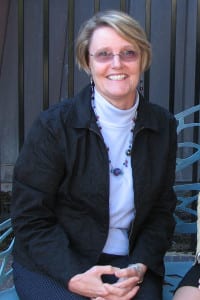When he was in secondary school, Alex Orlov and his family had to take an unusual device with them to shop. While his parents checked how ripe and fresh the fruits and vegetables were, they also put a Geiger counter near each item.
Orlov grew up in the Ukraine — only 60 miles from the site of the 1986 Chernobyl nuclear power plant explosion. In the first few weeks after the explosion, food and milk at farmer’s markets in Kiev, the capital of the Ukraine, wasn’t screened for radiation.
“If a potato had too much radiation, we didn’t want to buy it,” he said. Orlov’s mother, who was a doctor, went into the exclusion zone after the explosion to treat firefighters and police officers who, he remembered, sometimes fought radioactive flames with a hose and water.
Greatly affected by the dramatic events that caused his family to evacuate their home in Kiev for six months, Orlov went on to become a scientist, where he combines his interests in energy and the environment.
An assistant professor of Materials Science and Engineering at Stony Brook, he is working on a range of projects, including some that may one day reduce our dependence on fossil fuels and whose byproducts may include water, instead of greenhouse gases like carbon dioxide.
Orlov recently teamed up with colleagues from SBU, including Peichuan Shen and Shen Zhao from the Department of Materials Science and Engineering and Dong Su from the Center for Functional Nanomaterials and computational scientist Yan Li from Brookhaven National Laboratories, on research with incredibly small amounts of gold.
As it turns out, the properties of the precious metal change when there are only a dozen or so atoms. For starters, instead of being shiny and yellow, the way it is when it adorns an ear or flashes from a finger, it can appear red, blue or other colors on that small scale. More importantly, though, the gold atoms are much more reactive. When exposed to light, they can help break apart water, which has two molecules of hydrogen and one molecule of oxygen, into its different elements.
The gold is 35 times more effective than ordinary materials, such as the naturally occurring mineral cadmium sulfide, at separating water.
Hydrogen, the lightest element in the periodic table, can be a clean-burning fuel, producing water as a final combustion product.
The results were “very unexpected,” he said. “People used nanotechnology before and they might get a single digit improvement.”
Orlov said there is considerable work ahead before this process has practical application, although he does keep that goal in mind when he approaches his research.
He is going in “about a dozen different directions” as he explores other possible materials that might generate fuel, he said.
The commercial world has already embraced nanotechnology in several other arenas and has figured out how to make these miniature reactions scalable.
Orlov has advised one company, called PURETi, that produces a coating for buildings that will make them self-cleaning and air purifying. Nanotechnology is also used in industries ranging from cosmetics to health care to car manufacturing.
Nanotechnology has had “an immediate impact in everyday products.”
While gold may prove prohibitively expensive to generate hydrogen fuel, these experiments may provide a footprint to find other materials that could be just as effective.
“The devil is in the details,” Orlov suggests.
Orlov, who earned a Ph.D. and one of his three master’s degrees at the University of Cambridge, has coupled his interest in energy and the environment to serve as a scientific advisor to world leaders. Prior to his taking office as prime minister in the United Kingdom in 2010, David Cameron asked Orlov to serve as policy advisor for science, engineering and technology policy development. Nowadays, he travels to the UK every three months, where he advises on hazardous substances and the environmental impact of nanotechnology.
A resident of Smithtown, Orlov has been at Stony Brook for about five years and has been inspired by the interdisciplinary opportunities at the university and the affiliations with nearby institutions.
“Researchers from the top 10 institutions in the country are coming to Stony Brook” in part because of the connection to BNL, he said. “We couldn’t wish for better facilities.”
As for his research, Orlov recognizes — after his experiences in the Ukraine — that there is an ongoing need to balance the energy benefit of any new technology with its potential environmental
impact.





